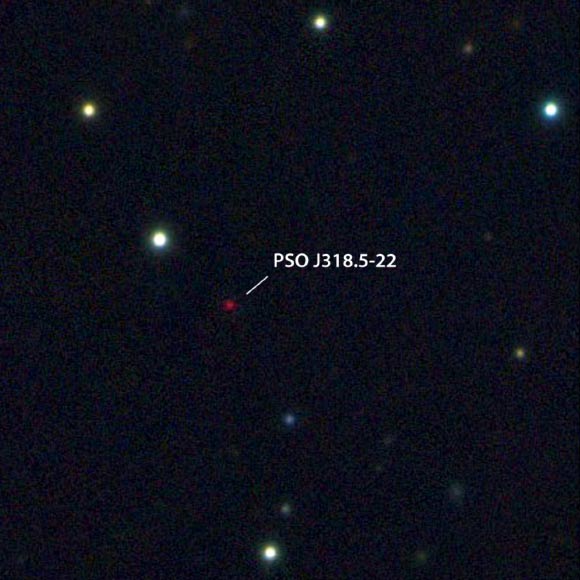Astronomers have detected layers of clouds – made up of hot dust and droplets of molten iron – on a planet-like object known as PSO J318.5338–22.8603 (PSO J318.5-22 for short).

This image shows the free-floating object PSO J318.5-22. Image credit: N. Metcalfe / Pan-STARRS 1 Science Consortium.
PSO J318.5-22 is a young, free-floating planetary-mass object approximately 75 light-years away in the constellation Capricornus. It is extremely faint, about 100 billion times fainter in optical light than the planet Venus.
This object is likely a rogue exoplanet or a low-mass brown dwarf. Scientists estimate it is about 23 million years old and has a mass of 8 times that of Jupiter.
It was discovered in 2013 by a University of Hawaii-led team of astronomers.
Now, Dr Beth Biller of the University of Edinburgh and co-authors have used ESO’s New Technology Telescope (NTT) in La Silla, Chile, to study the weather systems in PSO J318.5-22.
They captured hundreds of infra-red images of the object as it rotated over a 5-hour period.
By comparing its brightness with neighboring bodies, the astronomers discovered that PSO J318.5-22 is covered in multiple layers of thick and thin cloud.
“Temperatures inside clouds on the object exceed 1,470 degrees Fahrenheit (800 degrees Celsius),” Dr Biller and his colleagues said.
They were able to accurately measure changes in brightness on PSO J318.5-22 because it does not orbit a star.
“Stars like our Sun emit huge amounts of light, which can complicate measurements made of the brightness of objects orbiting them. Such techniques may eventually be applicable to cooler, lower mass planets, which are more likely to be capable of supporting life,” the astronomers said.
“We are working on extending this technique to giant planets around young stars, and eventually we hope to detect weather in Earth-like exoplanets that may harbor life,” Dr Biller concluded.
The results were published online October 30 in the Astrophysical Journal Letters (arXiv.org preprint).
_____
Beth A. Biller et al. 2015. Variability in a Young, L/T Transition Planetary-Mass Object. ApJ 813, L23; doi: 10.1088/2041-8205/813/2/L23








